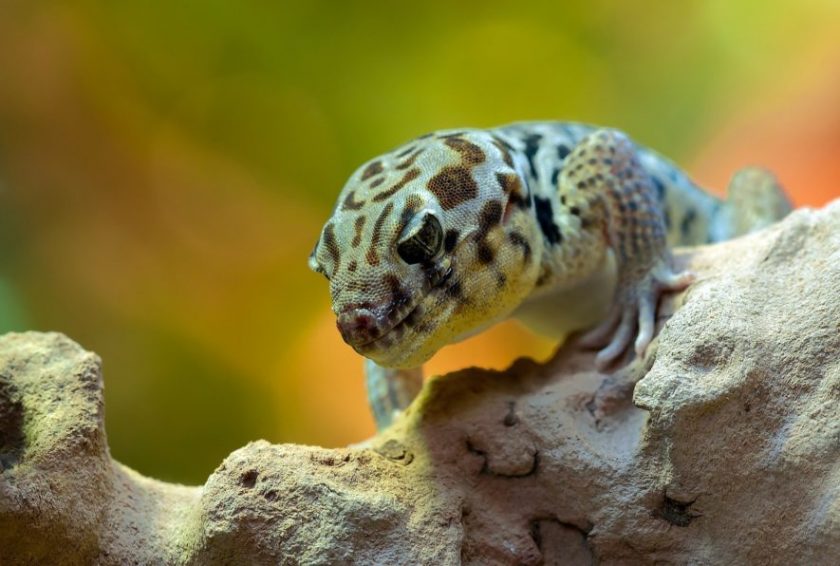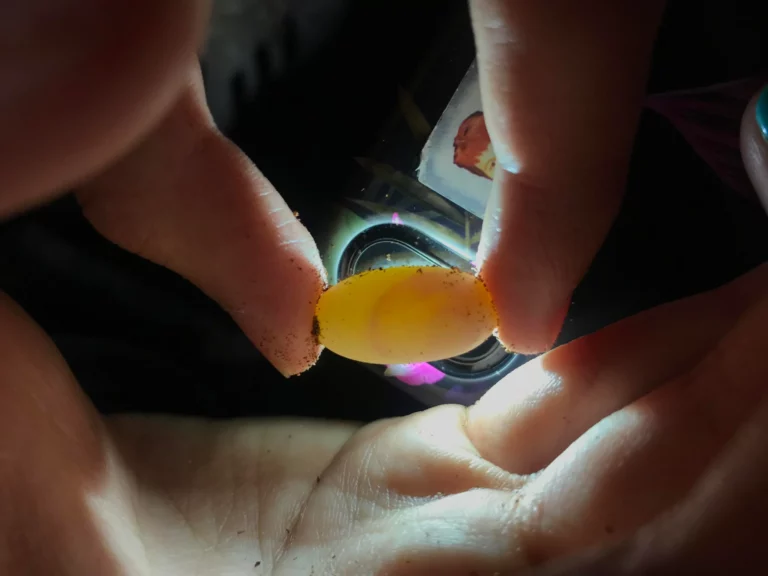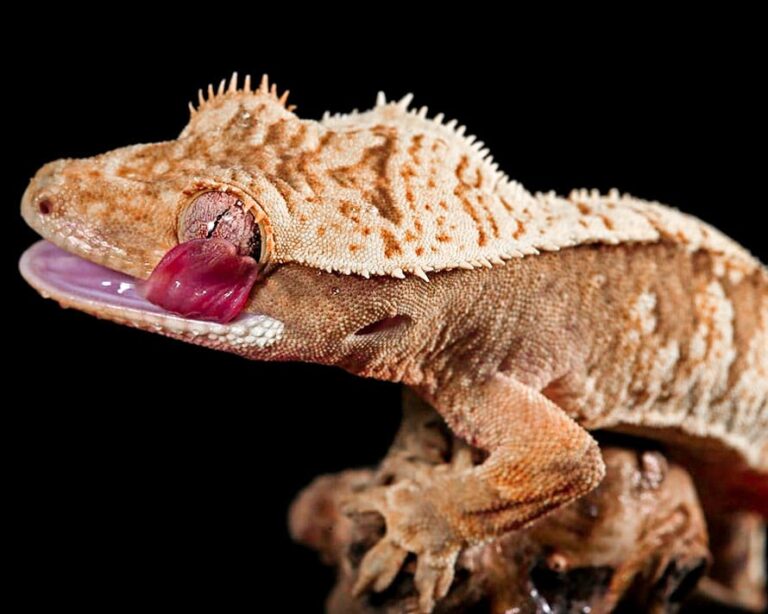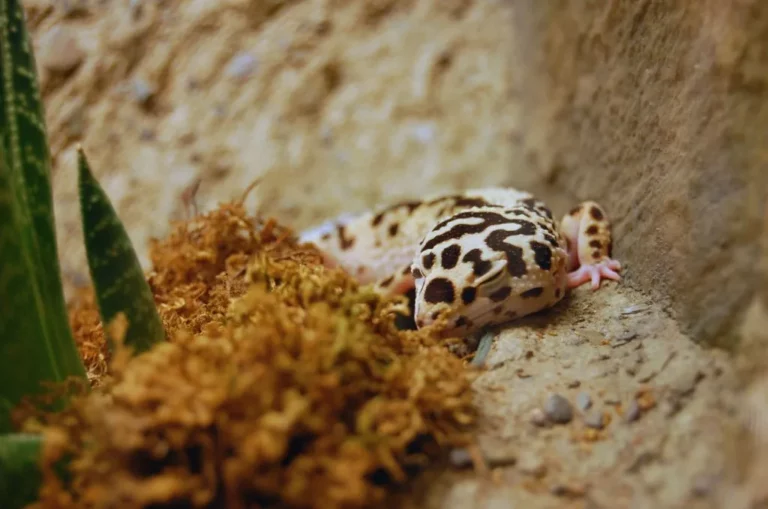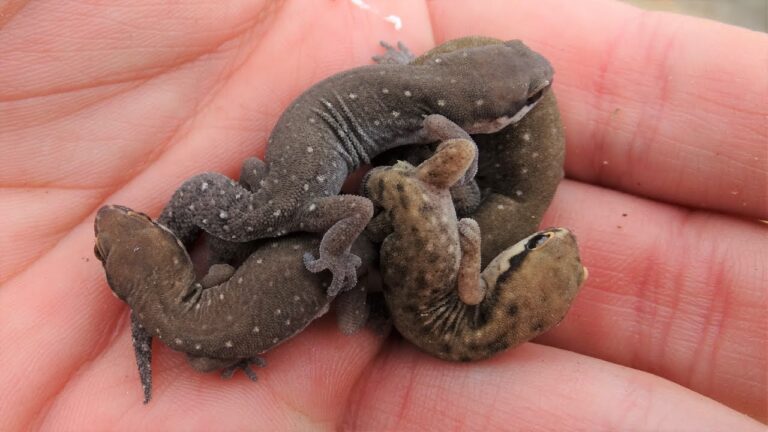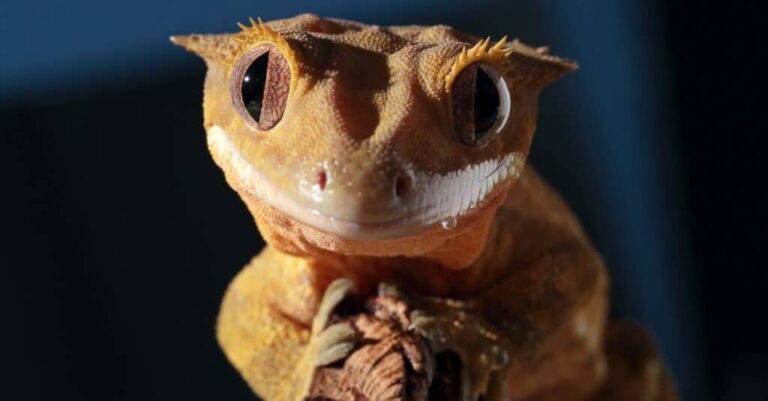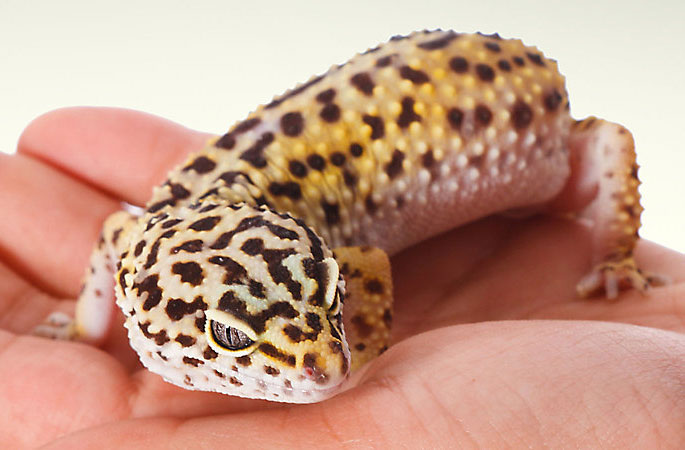Can Leopard Geckos Eat Grasshoppers? A Feast of Nature’s Bounty
As I sat in my room, gazing at the terrarium that housed my beloved leopard gecko, Spike, I couldn’t help but wonder about the best diet for this charming reptile. The vibrant hues of his scaly skin and the way his eyes followed my every move always fascinated me. It was during one of these contemplative moments that I stumbled upon a question that many reptile enthusiasts often ponder: Can leopard geckos eat grasshoppers?
Yes, Leopard Geckos can safely munch on grasshoppers. You can get them live or freeze-dried. They’re protein-packed but not great for calcium (about a 1:6 ratio). Be careful, they can be large and cause tummy trouble.
Whether you’re a seasoned reptile keeper or a novice explorer of the reptilian realm, you’re about to embark on a thrilling adventure into the world of them and their appetite for grasshoppers.
| Nutrient | Amount per 100 grams |
| Calories | 121 kcal |
| Protein | 20.6 grams |
| Fat | 6 grams |
| Carbohydrates | 0.7 grams |
| Fiber | 3.4 grams |
| Calcium | 35 mg |
| Iron | 9.7 mg |
| Magnesium | 63 mg |
| Phosphorus | 185 mg |
| Potassium | 300 mg |
| Zinc | 3.2 mg |
| Vitamin A (retinol) | 500 IU |
Drawback Of Feeding Grasshoppers To Leopard Geckos
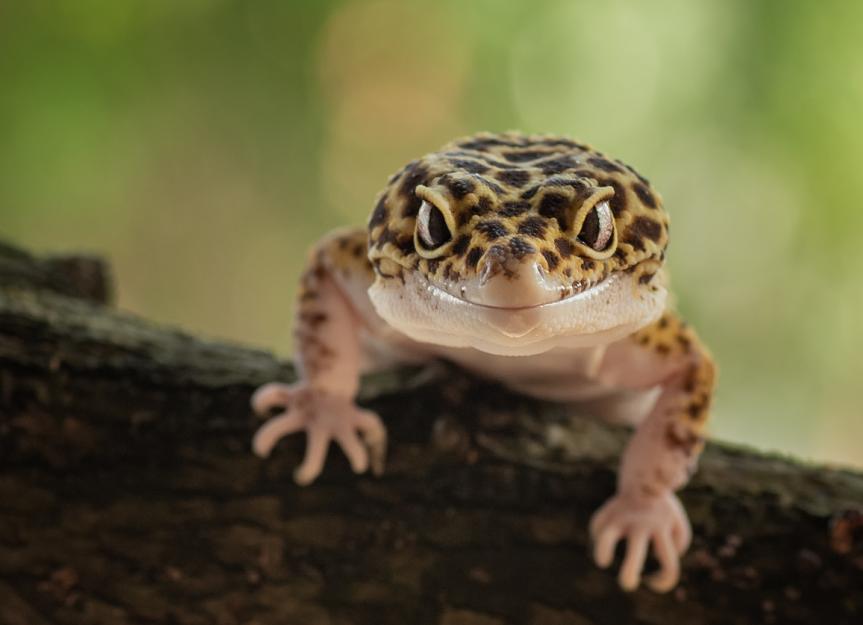
Limited Availability in the USA: In the United States, the sale and breeding of locusts, which are the commonly available grasshopper species, are banned due to their potential to wreak havoc on the environment and economy when they swarm and destroy crops. As a result, it’s nearly impossible to purchase live feeder insects if you reside in the USA.
Freeze-Dried Grasshoppers May Cause Impaction: Freeze-dried grasshoppers, an alternative option, are readily available in pet stores and online. However, these insects have very low moisture content due to the freeze-drying process. Concentrated protein and fiber levels in freeze-dried can make them risky as a staple food. They pose a high risk of causing impaction, a condition where food becomes trapped in the digestive tract and can be fatal for them.
Risks of Using Wild Grasshoppers: While wild grasshoppers can be found in gardens and fields, feeding them to your Leopard Gecko is not recommended due to various risks:
- Infections: Wild insects are exposed to illnesses and pathogens that captive-bred insects are not. Feeding a sick grasshopper to your Gecko could transmit bacteria and make them ill.
- Parasites: they may carry invisible parasites that can be transmitted to your pet potentially causing health issues.
- Chemical Exposure: Many of them especially locust species, are pests and may have been exposed to chemicals like pesticides, insecticides, and fertilizers, which can be harmful to them if ingested.
Grasshoppers Can Grow Too Large: Some species available as feeder insects can grow quite large. This means they may outgrow the size suitable for even an adult one, especially if you don’t use them promptly. Adult locusts, for instance, can reach up to 7 cm in length.
Higher Expense: Outside the USA, one significant drawback of using grasshoppers as a staple feeder insect is the cost. They tend to be more expensive than crickets, and this cost difference can accumulate over time if you frequently use them.
Benefits Of Feeding Grasshoppers To Leopard Geckos
Nutritional Excellence: Grasshoppers, including locusts, boast an impressive nutritional profile that sets them apart from other common feeder insects like crickets and mealworms. They are particularly rich in protein, exceeding the protein content of crickets and mealworms. Additionally, their moisture content is comparable to crickets and mealworms, ensuring proper hydration. Grasshoppers also provide a higher dietary fiber content, which Leopard Geckos can digest effectively. However, it’s essential to maintain dietary variety to prevent excessive fiber intake, which could lead to digestive issues. Furthermore, the calcium-to-phosphate ratio in locusts is favorable for Leopard Geckos, reducing the risk of metabolic bone disease.
HuntingEnriching Experience: Grasshoppers and locusts exhibit remarkable agility, powered by their robust hind legs, enabling them to leap up to 50cm. This agility makes them elusive, active, and challenging prey for it to capture. This exciting hunting experience is particularly beneficial for energetic and young Leopard Geckos, stimulating both their physical prowess and mental acuity.
Environmental Enrichment: To ensure the well-being of captive creatures, it’s essential to provide them with novel experiences and challenges, a practice known as environmental enrichment.
Furthermore, this prevents boredom, mental stagnation, lethargy, and excess weight gain. Grasshoppers, as live prey, offer superior enrichment compared to pre-made food mixes or deceased insects. They allow the gecko to express their natural hunting behaviors, promoting a more fulfilling captive life.
Moderating Difficulty: If you’re concerned that your pet may have difficulty capturing agile grasshoppers, you can temporarily slow down the prey. Placing them in the refrigerator for about ten minutes before offering them as food can make them more manageable prey for pets.
How Many Grasshoppers To Feed To Leopard Geckos?
| Age of Leopard Gecko | Grasshopper Size | Frequency per Week | Approximate Number of Grasshoppers per Feeding |
| Baby (0-3 months) | Extra Small to Small | Daily (5-7 times) | 1-2 grasshoppers |
| Juvenile (3-6 months) | Small to Medium | 4-5 times | 2-3 grasshoppers |
| Subadult (6-12 months) | Medium to Large | 3-4 times | 3-4 grasshoppers |
| Adult (12+ months) | Large | 2-3 times | 4-5 grasshoppers |
How Should You Prepare Grasshoppers To Feed To Leopard Geckos?
Addressing Calcium to Phosphorus Ratio:
Leopard Geckos require a diet with a calcium-to-phosphorus ratio of 1:1 to 2:1 for healthy bone development. They typically have an imbalanced ratio, of approximately 1:6, which can be detrimental to your gecko’s health.
Gut Loading:
- Gut loading involves feeding nutrient-rich foods to insects before offering them to your leopard gecko. This process ensures that your gecko not only consumes the insect but also benefits from the nutrients within the insect’s body.
- Grasshoppers, including locusts, are effective candidates for gut loading because they are herbivores and require a substantial amount of food for growth.
- Opt for nutrient-rich foods such as leafy greens, potatoes, squashes, and apples to feed grasshoppers during the gut-loading process. Avoid potentially toxic or harmful foods like avocados.
- Consider using specific insect gut-loading products designed to improve the calcium-to-phosphorus ratio in them. Products like T-Rex® Calcium Plus Food can be highly effective.
Hydration:
- They need access to water to stay hydrated, but they can easily drown in a traditional water bowl.
- Use a gel product like Fluker’s Cricket Quencher, fortified with calcium, as a safe water source for the grasshoppers.
Dusting:
- Dusting is the final step just before feeding the it to your pet
- Select a calcium-rich powder, such as Repashy Calcium Plus, recommended by herpetologists.
- Place the grasshoppers in a plastic ziplock bag and add the calcium powder. Gently shake the bag to ensure the grasshoppers are thoroughly coated.
Feeding Frequency:
- For baby, juvenile, sick, and gravid, it’s essential to dust all of them before feeding.
- Healthy adult geckos can have their food dusted once or twice a week.
Feeding Grasshoppers to Leopard Geckos: A Simple Approach
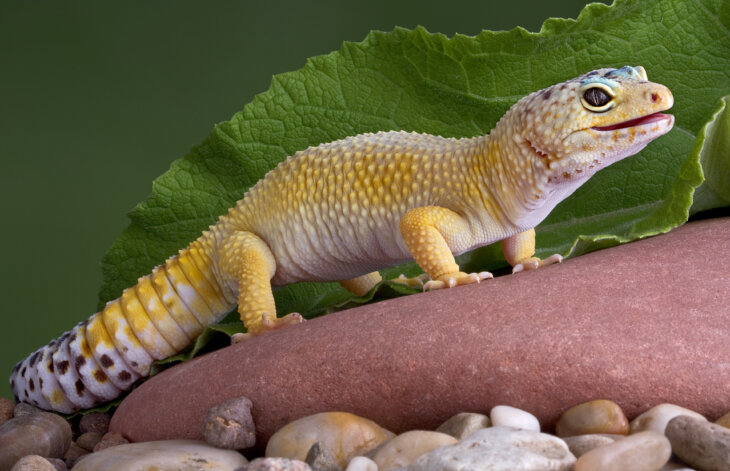
Here’s a straightforward method:
Choose the Right Surface: Place the grasshopper on a flat or smooth surface within your gecko’s tank, away from the substrate.
Feed One at a Time: Instead of adding a bunch of all at once, introduce them one by one. This not only makes feeding more enjoyable but also helps you monitor your pet hunting skills.
Prevent Hide and Seek: Feeding one at a time also prevents from hiding in the tank, which could lead to various issues.
FAQs
Can Grasshoppers Hurt Leopard Geckos?
No, Grasshoppers are generally safe for leopard geckos to eat, but caution is needed with large grasshoppers to prevent potential digestion issues.
Can I breed grasshoppers for my leopard gecko?
Yes, Breeding grasshoppers for your leopard gecko can be done, but it requires suitable conditions, space, and a source of proper nutrition for the grasshoppers.
What do grasshoppers eat?
Grasshoppers are herbivores and typically eat a diet of leafy greens, vegetables, and some fruits to thrive in captivity.
Final words :
In conclusion, I’ve learned that leopard geckos can indeed eat grasshoppers. These insects are safe and can be found both live and freeze-dried. While they’re a good protein source, their calcium-to-phosphorus ratio isn’t perfect. Plus, they can grow quite big, which might pose a digestion risk. So, it’s important to offer them in moderation and provide a well-rounded diet to keep my leopard gecko healthy and happy.

